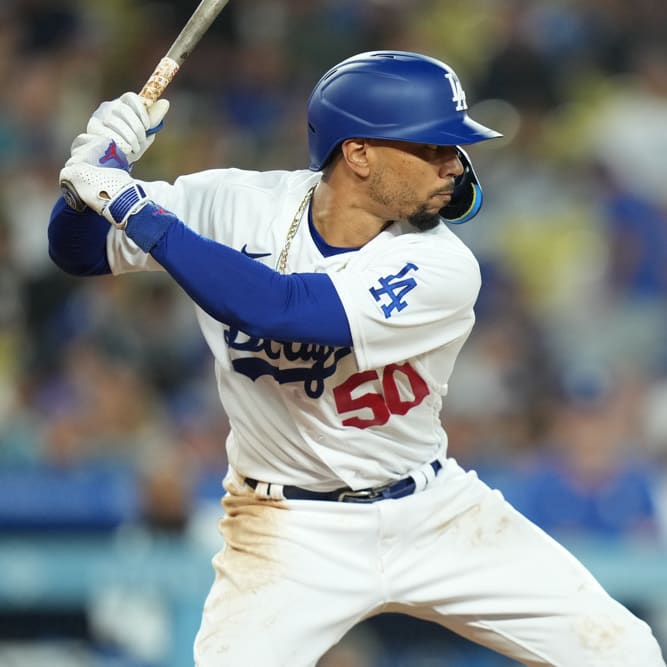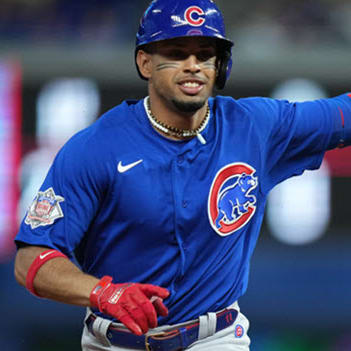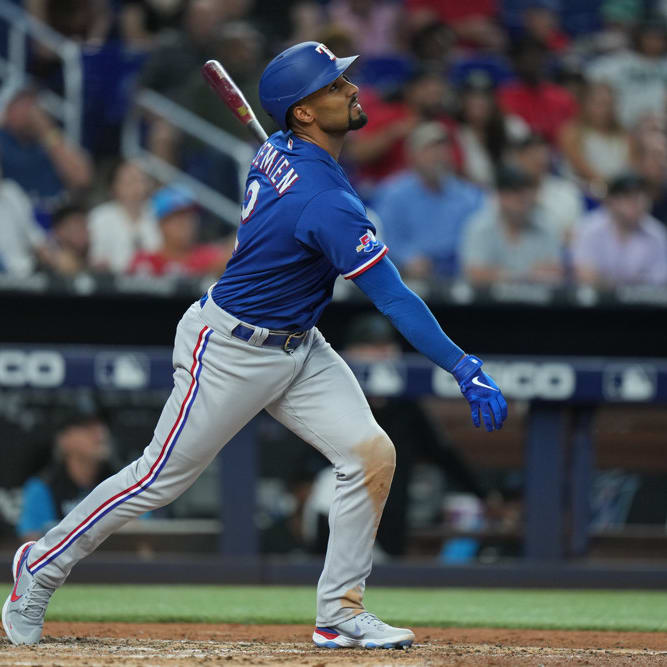This article is part of our MLB Barometer series.
The first week of March means it's TGFBI season. Writers and podcasters from around the fantasy baseball world get together to take part in an industry-wide contest, numbering 29 leagues this season. Two of the overall winners in the contest's three-year history have names that RotoWire readers will surely recognize: Clay Link and Todd Zola.
A comparison between players' average draft position in TGFBI and the NFBC is a useful exercise, revealing which players are thought of differently by us so-called experts as compared to the broader fantasy community, though I'd like to hold off on that until next week when drafts are done to get a more complete picture. This week, I'll use this introductory space to self-indulgently break down the first part of my draft and provide some thoughts on how I approached the draft overall, before moving on to discuss some early spring risers and fallers.
Round 1, pick 6: Jacob deGrom
Round 2, pick 25: Aaron Nola
I didn't go into this draft with any intention of starting with two pitchers, but I'm a firm believer in taking the best player available for the first few rounds. You really don't want to sacrifice overall value during the rounds in which the true inner-circle stars are available, and you have so many rounds left to cover for any weakness your top picks might have. These two were the top players on my board when it got to my pick, so it was a relatively straightforward decision.
The first week of March means it's TGFBI season. Writers and podcasters from around the fantasy baseball world get together to take part in an industry-wide contest, numbering 29 leagues this season. Two of the overall winners in the contest's three-year history have names that RotoWire readers will surely recognize: Clay Link and Todd Zola.
A comparison between players' average draft position in TGFBI and the NFBC is a useful exercise, revealing which players are thought of differently by us so-called experts as compared to the broader fantasy community, though I'd like to hold off on that until next week when drafts are done to get a more complete picture. This week, I'll use this introductory space to self-indulgently break down the first part of my draft and provide some thoughts on how I approached the draft overall, before moving on to discuss some early spring risers and fallers.
Round 1, pick 6: Jacob deGrom
Round 2, pick 25: Aaron Nola
I didn't go into this draft with any intention of starting with two pitchers, but I'm a firm believer in taking the best player available for the first few rounds. You really don't want to sacrifice overall value during the rounds in which the true inner-circle stars are available, and you have so many rounds left to cover for any weakness your top picks might have. These two were the top players on my board when it got to my pick, so it was a relatively straightforward decision. Starting with "pocket aces" did have a ripple effect on the rest of my draft, but that was something I was comfortable managing. Getting two very reliable starters also means I got to avoid the potential landmines that come with the talented but risky starters that I'd otherwise be forced to look at in the next several rounds as my second starter, whether that's guys with very brief resumes as frontline starters (Corbin Burnes, Zach Plesac) or guys with significant injury concerns (Stephen Strasburg, Dinelson Lamet).
Round 3, pick 36: Jose Abreu
Round 4, pick 55: J.T. Realmuto
Round 5, pick 66: Keston Hiura
Round 6, pick 85: Nick Castellanos
Round 7, pick 96: Nelson Cruz
Starting with two pitchers meant I wasn't even allowing myself to look at pitchers for the next several rounds, as I needed to make up for the fact that I was significantly behind the pack on the hitting side. I don't believe you can start with pocket aces and still end up strong in all five hitting categories, but I was willing to sacrifice steals to remain competitive in the other four. As such, I prioritized guys who can mash like Abreu, Castellanos and Cruz, with Hiura being the only member of this group who I expect to run much at all.
I'm somewhat uncertain about the Realmuto pick, as it's possible I was supposed to just stick with the biggest bats and ignore positional value given my start, but having Realmuto instead of a reserve-round catcher can be like having an extra hitter on your roster, and the value felt good at pick 55 (his March ADP is 36.6) even with his injury questions. Getting a guy like Cruz also is key when you don't grab your first hitter until pick 36. He seemingly always produces numbers that would justify a selection several rounds earlier, and I'm willing to accept the loss of roster flexibility in an effort to overcome my slow start at the plate.
Round 8, pick 115: Brad Hand
Round 9, pick 126: Kirby Yates
Round 10, pick 145: Pablo Lopez
The Yates pick I believe may be my biggest mistake of the draft. I value him very highly, as he was probably the best reliever in the game in 2018 and 2019, and the idea of locking in two virtually certain closers in a year in which there would barely be one closer per team in a 15-team league had a ton of appeal, letting me simply focus on taking the best available starter or hitter the rest of the way and not having to waste picks speculating on guys who probably won't pick up saves. I'm just not sure you can justify the second closer so early when you're behind in hitting due to not picking a hitter in the first two rounds. The Lopez pick only exacerbated the issue. I had intended to grab two closers and then go back to grabbing more bats, but starters were being pushed up in my draft and Lopez was the last guy remaining who I felt comfortable with as my third starter. I like both him and Yates quite a bit, but I really think I should be on six hitters and four pitchers through 10 rounds given my pocket-aces start.
There isn't space here to go through the rest of the draft, but I managed to load up on hitters to address that imbalance, selecting one with five of my next six picks, stopping only to jump in and grab Shohei Ohtani in the 12th round at pick 175, a fair bit ahead of his ADP, for reasons I'll discuss below. I still prioritized hitters who would help in the non-steal categories rather than trying to dig out of my steals hole, as the other four categories tend to correlate with each other and I didn't have time to take someone who would be a significant drag elsewhere just to get a bit of speed, though I did try to take players who weren't total zeroes in that category like Ha-seong Kim, AJ Pollock and Chris Taylor. I've also noticed that TGFBI drafters tend to push up the exciting sleepers, leaving the boring old guys alone, so I was happy to get good values on players like Lorenzo Cain, Buster Posey and Joey Votto, setting what stands as the max pick on all three as of writing.
I'm not totally sold on every aspect of my team, but I think I have an acceptable lineup to pair with what could be top-tier pitching. The projections (which can be found in this remarkably comprehensive spreadsheet put together by Smada) seem to like my team, and I'm feeling pretty confident about it until deGrom or Nola inevitably blows out an elbow in April and make me regret ever drafting a pitcher early. For now, let's move on to some players whose stocks have risen or fallen since the start of spring training.
RISERS
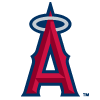 Shohei Ohtani, SP/DH, Angels: Ohtani crossed the Pacific with tons of hype in December 2017, but the two-way phenom has lived up to that billing for less than half a season out of the three he's spent stateside. Elbow troubles kept him to just 10 starts in 2018, with Tommy John surgery limiting him to designated hitter duty the next year. He made two awful starts last year, giving up seven runs while recording just five outs, before being shut down from pitching again and carrying those struggles into the batter's box for an all-around very disappointing year. Those struggles understandably suppressed his stock heading into this year's draft season, especially when his velocity was reportedly topping out at 90 mph in his first bullpen session. That now appears to be nothing more than a case of a pitcher easing into spring, as he's since been recorded topping out at 100 mph. Combined with reports that he changed his offseason routine and took a trip to Driveline Baseball, that should be enough to restart the hype train. His NFBC ADP was 227.6 through the end of February but has jumped 45 spots to 182.6 in March. He could be especially valuable in daily moves leagues this year, with the Angels reportedly considering allowing him to hit the day after he pitches.
Shohei Ohtani, SP/DH, Angels: Ohtani crossed the Pacific with tons of hype in December 2017, but the two-way phenom has lived up to that billing for less than half a season out of the three he's spent stateside. Elbow troubles kept him to just 10 starts in 2018, with Tommy John surgery limiting him to designated hitter duty the next year. He made two awful starts last year, giving up seven runs while recording just five outs, before being shut down from pitching again and carrying those struggles into the batter's box for an all-around very disappointing year. Those struggles understandably suppressed his stock heading into this year's draft season, especially when his velocity was reportedly topping out at 90 mph in his first bullpen session. That now appears to be nothing more than a case of a pitcher easing into spring, as he's since been recorded topping out at 100 mph. Combined with reports that he changed his offseason routine and took a trip to Driveline Baseball, that should be enough to restart the hype train. His NFBC ADP was 227.6 through the end of February but has jumped 45 spots to 182.6 in March. He could be especially valuable in daily moves leagues this year, with the Angels reportedly considering allowing him to hit the day after he pitches.
 Nick Senzel, OF, Reds: Senzel is another player whose stock has jumped recently. Through the end of February, his NFBC ADP was 275.0, but it's jumped up nearly two rounds to 249.5 in March. That jump coincides with comments from manager David Bell that indicated Senzel would be the team's true starting center fielder. While he won't necessarily have quite an everyday role with Shogo Akiyama likely to get at least a handful of opportunities, it looks as though he'll be the clear primary option. Role questions were, of course, just one of the issues with Senzel, as he's also had more than his fair share of injuries and has yet to come close to fulfilling his promise at the plate. Still, he's just 25 and was one of the top prospects in the league in the recent past, and his 14 homers and 16 steals through 492 career plate appearances at the highest level demonstrate his cross-category potential if he can just stay on the field. He remains a risky option, but at least one of the questions surrounding him as been answered and he's still cheap enough that the risk appears worth taking.
Nick Senzel, OF, Reds: Senzel is another player whose stock has jumped recently. Through the end of February, his NFBC ADP was 275.0, but it's jumped up nearly two rounds to 249.5 in March. That jump coincides with comments from manager David Bell that indicated Senzel would be the team's true starting center fielder. While he won't necessarily have quite an everyday role with Shogo Akiyama likely to get at least a handful of opportunities, it looks as though he'll be the clear primary option. Role questions were, of course, just one of the issues with Senzel, as he's also had more than his fair share of injuries and has yet to come close to fulfilling his promise at the plate. Still, he's just 25 and was one of the top prospects in the league in the recent past, and his 14 homers and 16 steals through 492 career plate appearances at the highest level demonstrate his cross-category potential if he can just stay on the field. He remains a risky option, but at least one of the questions surrounding him as been answered and he's still cheap enough that the risk appears worth taking.
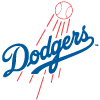 Gavin Lux, 2B, Dodgers: Lux is in a very similar position to Senzel as a highly touted prospect who has yet to demonstrate his considerable potential and comes with playing-time concerns (though he at least has a better health track record). As with Senzel, however, recent comments from his manager suggest he's in line for regular at-bats this season. He won't necessarily have a true everyday role to begin the year, as the Dodgers' deep and flexible roster means Chris Taylor and Max Muncy are likely to spend some time at the keystone, but Dave Roberts noted that the team is willing to play Lux even against left-handed pitchers, which sounds like a great sign for how often he'll be in the lineup. Lux's .210/.278/.377 career line isn't pretty, but he's still just 23 and has played in just 42 major league games. There's still plenty of time for him to become the guy who hit .336/.410/.560 his final two years in the minors.
Gavin Lux, 2B, Dodgers: Lux is in a very similar position to Senzel as a highly touted prospect who has yet to demonstrate his considerable potential and comes with playing-time concerns (though he at least has a better health track record). As with Senzel, however, recent comments from his manager suggest he's in line for regular at-bats this season. He won't necessarily have a true everyday role to begin the year, as the Dodgers' deep and flexible roster means Chris Taylor and Max Muncy are likely to spend some time at the keystone, but Dave Roberts noted that the team is willing to play Lux even against left-handed pitchers, which sounds like a great sign for how often he'll be in the lineup. Lux's .210/.278/.377 career line isn't pretty, but he's still just 23 and has played in just 42 major league games. There's still plenty of time for him to become the guy who hit .336/.410/.560 his final two years in the minors.
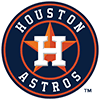 Jake Odorizzi, SP, Astros: There are few more reliable ways of improving your fantasy stock than finding an employer, so Odorizzi's should rise a fair amount after he went from the best free agent left on the market to a mid-rotation starter in Houston, filling the spot left vacant after Framber Valdez's potentially season-ending finger fracture. There are certainly reasons not to be all in on Odorizzi, as he battled multiple injuries last season and made just four starts, and the fact that he was still available in early March may suggest that teams weren't particularly confident in his health heading into his age-31 season. He has a fair amount of upside if he's fully healthy, though, as he looked quite good in 2019, striking out a career-high 27.1 percent of batters en route to a 3.51 ERA. He's also joined a team where he'll have plenty of help chasing wins and a team that has a reputation for helping pitchers improve (albeit not necessarily through above-board means).
Jake Odorizzi, SP, Astros: There are few more reliable ways of improving your fantasy stock than finding an employer, so Odorizzi's should rise a fair amount after he went from the best free agent left on the market to a mid-rotation starter in Houston, filling the spot left vacant after Framber Valdez's potentially season-ending finger fracture. There are certainly reasons not to be all in on Odorizzi, as he battled multiple injuries last season and made just four starts, and the fact that he was still available in early March may suggest that teams weren't particularly confident in his health heading into his age-31 season. He has a fair amount of upside if he's fully healthy, though, as he looked quite good in 2019, striking out a career-high 27.1 percent of batters en route to a 3.51 ERA. He's also joined a team where he'll have plenty of help chasing wins and a team that has a reputation for helping pitchers improve (albeit not necessarily through above-board means).
 Rhys Hoskins, 1B, Phillies: Hoskins underwent Tommy John surgery in October, and while that procedure isn't nearly as devastating for hitters as it is for pitchers, his readiness for Opening Day was still thought to be in serious question. His four-to-six-month timeline indicated he'd be ready to go somewhere between February and April. As it turns out, his recovery was on the fast end of the spectrum, as he's had a normal spring and has already appeared in one Grapefruit League game. That came as merely a designated hitter, but he still looks to have plenty of time to get up to speed defensively by Opening Day. Hoskins hasn't been the most consistent hitter throughout his four big-league seasons, but he's coming off one of his better ones, hitting .245/.384/.503 with 10 homers in just 41 games. His strongest skill has always been his elite walk rate, so he gets a big boost in on-base percentage leagues.
Rhys Hoskins, 1B, Phillies: Hoskins underwent Tommy John surgery in October, and while that procedure isn't nearly as devastating for hitters as it is for pitchers, his readiness for Opening Day was still thought to be in serious question. His four-to-six-month timeline indicated he'd be ready to go somewhere between February and April. As it turns out, his recovery was on the fast end of the spectrum, as he's had a normal spring and has already appeared in one Grapefruit League game. That came as merely a designated hitter, but he still looks to have plenty of time to get up to speed defensively by Opening Day. Hoskins hasn't been the most consistent hitter throughout his four big-league seasons, but he's coming off one of his better ones, hitting .245/.384/.503 with 10 homers in just 41 games. His strongest skill has always been his elite walk rate, so he gets a big boost in on-base percentage leagues.
FALLERS
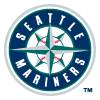 Jarred Kelenic, OF, Mariners: It's been an eventful few weeks for Kelenic. He was one of the players discussed by the Mariners' then-president Kevin Mather in his talk with the Bellevue Breakfast Rotary Club in February, with Mather explicitly discussing how the team intended to manipulate his service time and keep him the minors until late April. The strong public backlash to those comments could have opened the door for Kelenic to play his way onto the Opening Day roster, and he was giving it his best shot with some strong spring performances, including a homer right as manager Scott Servais spoke about how players "will let you know when they're ready" during an in-game interview. Unfortunately, Kelenic suffered a Grade 2 adductor strain in his left knee two days later. He said he'll be back within a week, though the injury typically takes three to six weeks of recovery, so that could just be a case of youthful optimism. Even if he's only out for a week, the Mariners could use the injury as an excuse to slow-play him and send him to the minors to open the year while taking less of a PR hit, as they always planned to do.
Jarred Kelenic, OF, Mariners: It's been an eventful few weeks for Kelenic. He was one of the players discussed by the Mariners' then-president Kevin Mather in his talk with the Bellevue Breakfast Rotary Club in February, with Mather explicitly discussing how the team intended to manipulate his service time and keep him the minors until late April. The strong public backlash to those comments could have opened the door for Kelenic to play his way onto the Opening Day roster, and he was giving it his best shot with some strong spring performances, including a homer right as manager Scott Servais spoke about how players "will let you know when they're ready" during an in-game interview. Unfortunately, Kelenic suffered a Grade 2 adductor strain in his left knee two days later. He said he'll be back within a week, though the injury typically takes three to six weeks of recovery, so that could just be a case of youthful optimism. Even if he's only out for a week, the Mariners could use the injury as an excuse to slow-play him and send him to the minors to open the year while taking less of a PR hit, as they always planned to do.
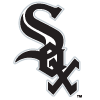 Michael Kopech, SP, White Sox: Kopech was always going to have his workload managed in some way this season, as he hasn't pitched in a regular-season game since 2018. He missed all 2019 while recovering from Tommy John surgery and then opted out of the 2020 season. The announcement that he'll begin the year in the bullpen does put a damper on his draft-day value, however. He's still interesting in deeper leagues (albeit less interesting than before), as there are plenty of worse things to do with your bench spots than stashing someone with his potential, and his strikeout upside means he could still provide value as a long reliever. In shallower formats, he becomes a lot harder to draft. You're unlikely to want to start anyone but the most elite non-closing relievers in those leagues, and there's no guarantee the starter version of Kopech will be someone worth waiting for in such setups. While he does have plenty of potential, he didn't come close to realizing it during his four-start cameo in 2018, striking out a pedestrian 22.1 percent of batters en route to a 5.02 ERA.
Michael Kopech, SP, White Sox: Kopech was always going to have his workload managed in some way this season, as he hasn't pitched in a regular-season game since 2018. He missed all 2019 while recovering from Tommy John surgery and then opted out of the 2020 season. The announcement that he'll begin the year in the bullpen does put a damper on his draft-day value, however. He's still interesting in deeper leagues (albeit less interesting than before), as there are plenty of worse things to do with your bench spots than stashing someone with his potential, and his strikeout upside means he could still provide value as a long reliever. In shallower formats, he becomes a lot harder to draft. You're unlikely to want to start anyone but the most elite non-closing relievers in those leagues, and there's no guarantee the starter version of Kopech will be someone worth waiting for in such setups. While he does have plenty of potential, he didn't come close to realizing it during his four-start cameo in 2018, striking out a pedestrian 22.1 percent of batters en route to a 5.02 ERA.
 Will Smith, C, Dodgers: There's no doubt that Smith is one of the best offensive catchers in the league. Since his debut in 2019, his 144 wRC+ is 10 points better than any backstop who's come to the plate at least 200 times. The downside with him from a fantasy perspective is that he plays for the Dodgers, who have tons of depth throughout their roster and aren't shy about using it. Manager Dave Roberts referred to Smith and fellow catcher Austin Barnes as 1 and 1A last week, rather than starter and backup, and it's quite believable that the Dodgers will go forward with that plan. Smith started 31 games behind the plate last season to 27 for Barnes, with Smith only missing a short time with a minimum-length trip to the injured list in August. Smith picked up the occasional start as a designated hitter, but that option won't be there this season. He should still deservedly be one of the top catchers off the board, but he'll likely handle a noticeably smaller workload than the other backstops taken near him, which makes him slightly less interesting than he deserves on talent alone.
Will Smith, C, Dodgers: There's no doubt that Smith is one of the best offensive catchers in the league. Since his debut in 2019, his 144 wRC+ is 10 points better than any backstop who's come to the plate at least 200 times. The downside with him from a fantasy perspective is that he plays for the Dodgers, who have tons of depth throughout their roster and aren't shy about using it. Manager Dave Roberts referred to Smith and fellow catcher Austin Barnes as 1 and 1A last week, rather than starter and backup, and it's quite believable that the Dodgers will go forward with that plan. Smith started 31 games behind the plate last season to 27 for Barnes, with Smith only missing a short time with a minimum-length trip to the injured list in August. Smith picked up the occasional start as a designated hitter, but that option won't be there this season. He should still deservedly be one of the top catchers off the board, but he'll likely handle a noticeably smaller workload than the other backstops taken near him, which makes him slightly less interesting than he deserves on talent alone.
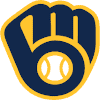 Avisail Garcia, OF, Brewers: Garcia wasn't the most exciting option to begin with, as he's had an up-and-down career and was coming off a year that fit firmly in the latter category. Playing in hitter-friendly Miller Park (now American Family Field) didn't give him much of a boost, as he managed just two homers and one steal while hitting .238/.333/.326, a far cry from the .282/.332/.464 line with 20 homers and 10 steals he managed the year prior in Tampa. He remained at least mildly interesting as a bounce-back candidate, especially after reports surfaced that he got into significantly better shape over winter, but the signing of Jackie Bradley Jr. suddenly makes him a whole lot less interesting. He's unlikely to lose his job completely, as Bradley should give the 34-year-old Lorenzo Cain a fair number of days off in center, but the move suddenly takes Garcia from a near-everyday player to someone who may be lucky to start half the Brewers' games.
Avisail Garcia, OF, Brewers: Garcia wasn't the most exciting option to begin with, as he's had an up-and-down career and was coming off a year that fit firmly in the latter category. Playing in hitter-friendly Miller Park (now American Family Field) didn't give him much of a boost, as he managed just two homers and one steal while hitting .238/.333/.326, a far cry from the .282/.332/.464 line with 20 homers and 10 steals he managed the year prior in Tampa. He remained at least mildly interesting as a bounce-back candidate, especially after reports surfaced that he got into significantly better shape over winter, but the signing of Jackie Bradley Jr. suddenly makes him a whole lot less interesting. He's unlikely to lose his job completely, as Bradley should give the 34-year-old Lorenzo Cain a fair number of days off in center, but the move suddenly takes Garcia from a near-everyday player to someone who may be lucky to start half the Brewers' games.
 Forrest Whitley, SP, Astros: Framber Valdez's broken finger could have opened up the door for Whitley to finally stake his claim as a member of the Astros' rotation, but he instead suffered the latest in a frustratingly long list of setbacks. It was revealed Sunday that he'd been he'd been diagnosed with a UCL sprain and would probably need Tommy John surgery, knocking him out until the middle of next season. Whitley broke out in 2017 with a 2.83 ERA and 37.6 percent strikeout rate across three levels of the minors, but since then he's thrown just 86 innings in the last three years. He's missed time due to a drug suspension, an oblique strain, shoulder fatigue, undisclosed arm troubles and now likely Tommy John. Former Astros pro scouting coordinator Kevin Goldstein and current FanGraphs writer wrote in an early February chat, "I'm not sure there's a prospect in baseball with a wider range of possible outcomes than Whitley. I wouldn't be surprised if he pitched zero innings in the big league[s], and I wouldn't be surprised if he established himself as a rotation piece." The former outcome unfortunately now looks as likely as ever.
Forrest Whitley, SP, Astros: Framber Valdez's broken finger could have opened up the door for Whitley to finally stake his claim as a member of the Astros' rotation, but he instead suffered the latest in a frustratingly long list of setbacks. It was revealed Sunday that he'd been he'd been diagnosed with a UCL sprain and would probably need Tommy John surgery, knocking him out until the middle of next season. Whitley broke out in 2017 with a 2.83 ERA and 37.6 percent strikeout rate across three levels of the minors, but since then he's thrown just 86 innings in the last three years. He's missed time due to a drug suspension, an oblique strain, shoulder fatigue, undisclosed arm troubles and now likely Tommy John. Former Astros pro scouting coordinator Kevin Goldstein and current FanGraphs writer wrote in an early February chat, "I'm not sure there's a prospect in baseball with a wider range of possible outcomes than Whitley. I wouldn't be surprised if he pitched zero innings in the big league[s], and I wouldn't be surprised if he established himself as a rotation piece." The former outcome unfortunately now looks as likely as ever.







